Complete Solutions to Displacement , Velocity And Acceleration Of Centre Of Mass of chapter ROTATIONAL DYNAMICS of Class 11 book with complete answers and questions
| Class 11 | PHYSICS |
| Chapter | ROTATIONAL DYNAMICS |
| A2Z | Displacement , Velocity And Acceleration Of Centre Of Mass |
| Number Of Questions | 30 |
| Academic Year | 2023-24 |
The velocity of centre of mass of the system remains constant, if the total external force acting on the system is.
View SolutionA system of particles is free from any external force `vec v and vec a` be the velocity and acceleration of the centre of mass, then it necessarily follows that :
View SolutionA child is sitting at one end of a long trolley moving with a uniform speed `v` on a smooth horizontal track. If the child starts running towards the other end of the trolley with a speed `u` (w.r.t. trolley), the speed of the centre of mass of the system will.
View SolutionWhen an explosive shell travelling in a parabolic path under the effect of gravity explodes in the mid air, the centre of mass of the fragments will move.
View SolutionThe velocity of the `CM` of a system changes from `vec v_1 = 4 hat im//s to vecv_2 = 3 hatj m//s` during time `Deltat = 2 s`. If the mass of the system is `m = 10 kg`, the constant force acting on the system is :
View SolutionAn insulated particle of mass `m` is moving in a horizontal plane (x - y) along X-axis. At a certain height above the ground, it suddenly explodes into two fragments of masses `m//4 and 3 m//4`. An instant later, the smaller fragment is at `Y = + 15`. The larger fragment at this instant is at :
View SolutionA mass `m` is at rest on an inclined plane of mass `M` which is further resting on a smooth horizontal plane. Now if the mass starts moving, the position of centre of mass of the system will :
 .
.
View SolutionConsider a large block placed on a smooth horizontal surface, with a man standing at one end of the block. The man walks to the other end, relative to the block. The distances (absolute) moved by the man and the block are :
View SolutionA body A of mass M while falling vertically downwards under gravity brakes into two parts, a body B of mass `(1)/(3)` M and a body C of mass `(2)/(3)` M. The center of mass of bodies B and C taken together shifts compared to that of body A towards
View SolutionA boy of mass `m` is standing on a block of mass `M` kept on a rough surface. When the boy walks from left to right on the block, the centre of mass (boy + block) of system :
View SolutionA `10 kg` boy standing in a `40 kg` boat floating on water is `20 m` away from the shore of the river. If the boy moves `8 m` on the boat towards the shore, then how far is he from the shore ? (Assume no friction between boat and water).
View SolutionA wedge `Q` of mass `M` is placed on a horizontal frictionless surface `AB` and a its frictionless slope. As `P` slides by a length `L` on this slope of inclination `theta, Q` would slide by a distance of.
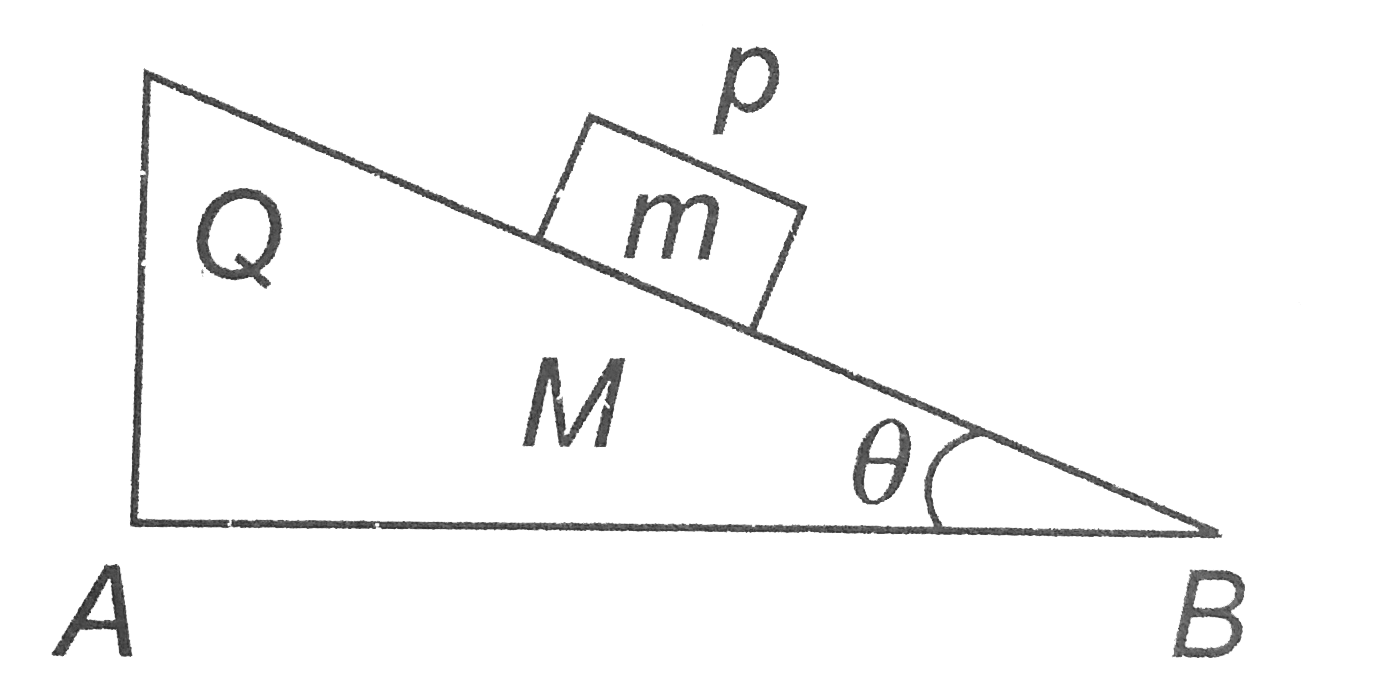 .
.
View SolutionA man weighing `80 kg` is standing on a trolley weighing `320 kg`. The trolley is resting on frictionless horizontal rails. If the man starts walking on the trolley along the rails at speed `1 m//s` (w.r.t. to trolley) then after `4 s` his displacement relative to the ground will be :
View SolutionIn a gravity free space, man of mass `M` standing at a height `h` above the floor, throws a ball of mass `m` straight down with a speed `u`. When the ball reaches the floor, the distance of the man above the floor will be.
View SolutionTwo paricle A and B initially at rest, move towards each other under mutual force of attraction. At the instant when the speed of A is V and the speed of B is 2V, the speed of the centre of mass of the system is
View SolutionThree balls of different masses are thrown at different instants up againsts up gravity. While all the three balls are in air, the centre of mass of the system of three balls has an acceleration :
View SolutionA particle of mass `200 g` is dropped from a height of `50 m` and another particle of mass `100 g` is simultaneously projected up from the ground along the same lime, with a speed of `100 m//s`. The acceleration of the centre of mass after `1 sec` is.
View SolutionIn the above problem the velocity of the centre of mass after `1 sec` will be :
View SolutionTwo masses `m_1 = 1 kg and m_2 = 2 kg` are connected by a light inextensible string and suspended by means of a weightness pulley as shown in the figure. Assuming that both the masses start from rest, the distance travelled by the centre of mass in two seconds is `(Take g = 10 ms^-2`.
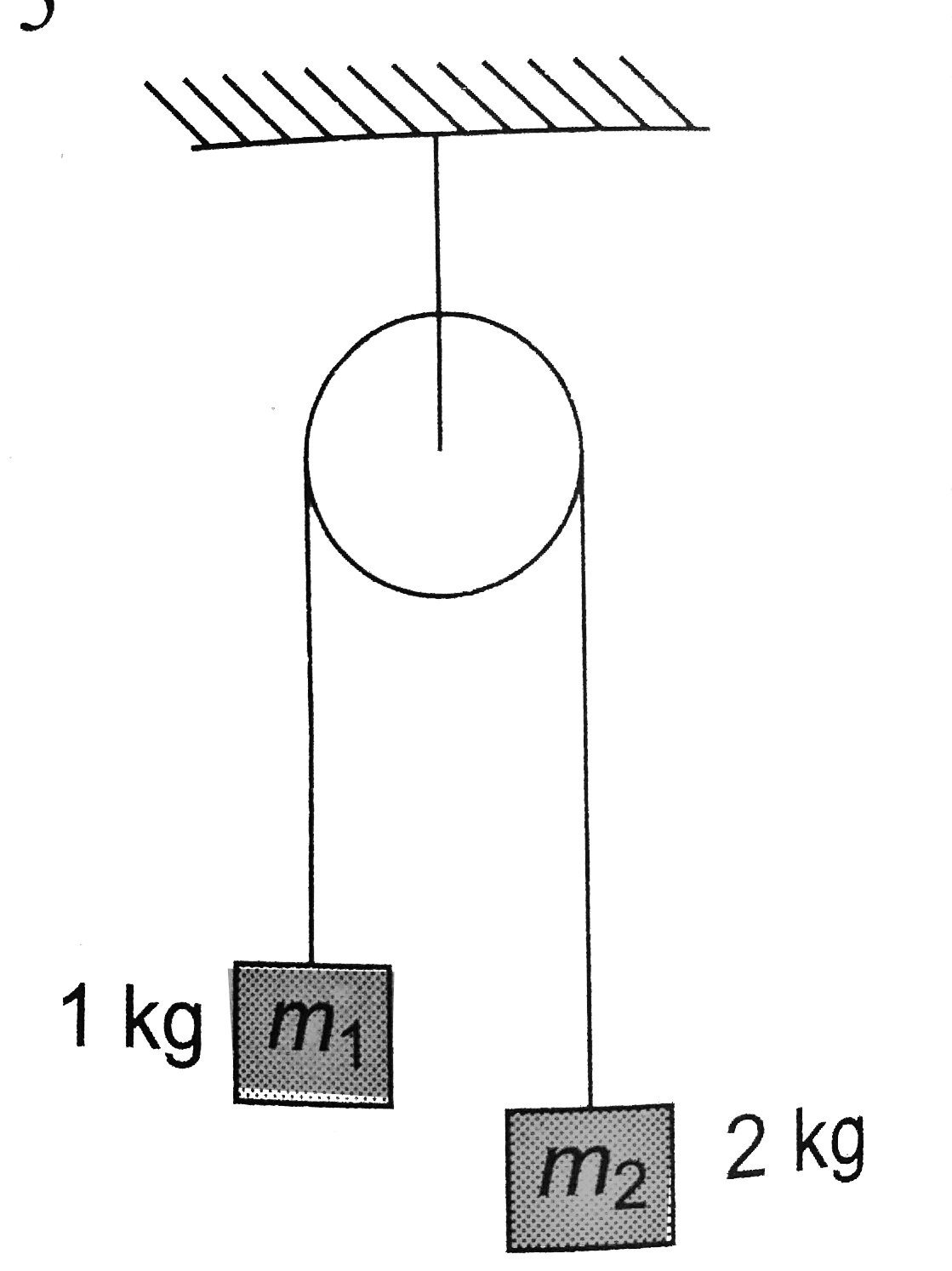 .
.
View SolutionTwo bodies of masses `1 kg and 2 kg` are moving in two perpendicular direction with velocities `1 m//s and 2 m//s` as shown in figure. The velocity of the centre of mass (in magnitide) of the system will be :
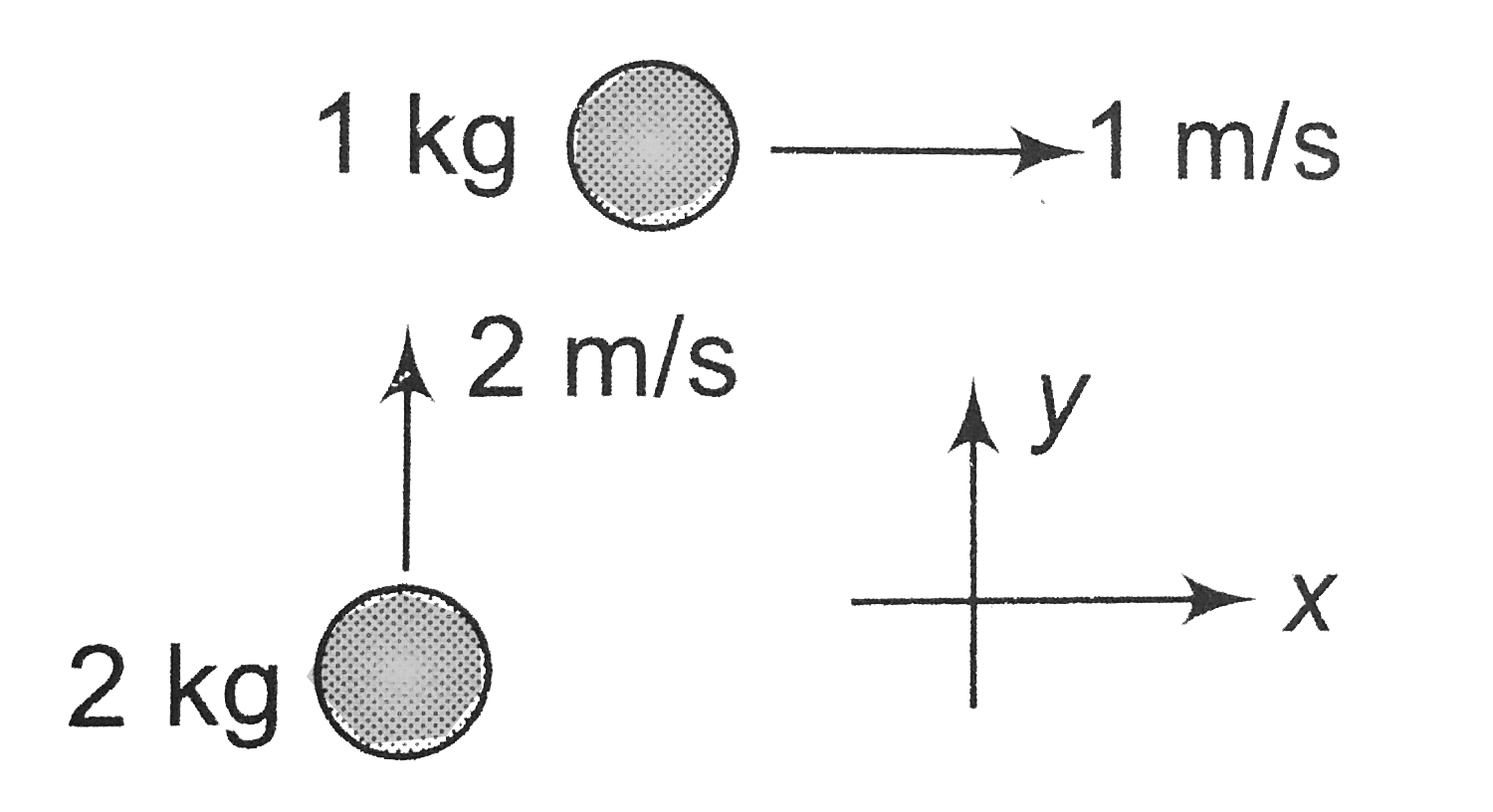
View SolutionIf the system is released, then the acceleration of the centre of mass of the system is :
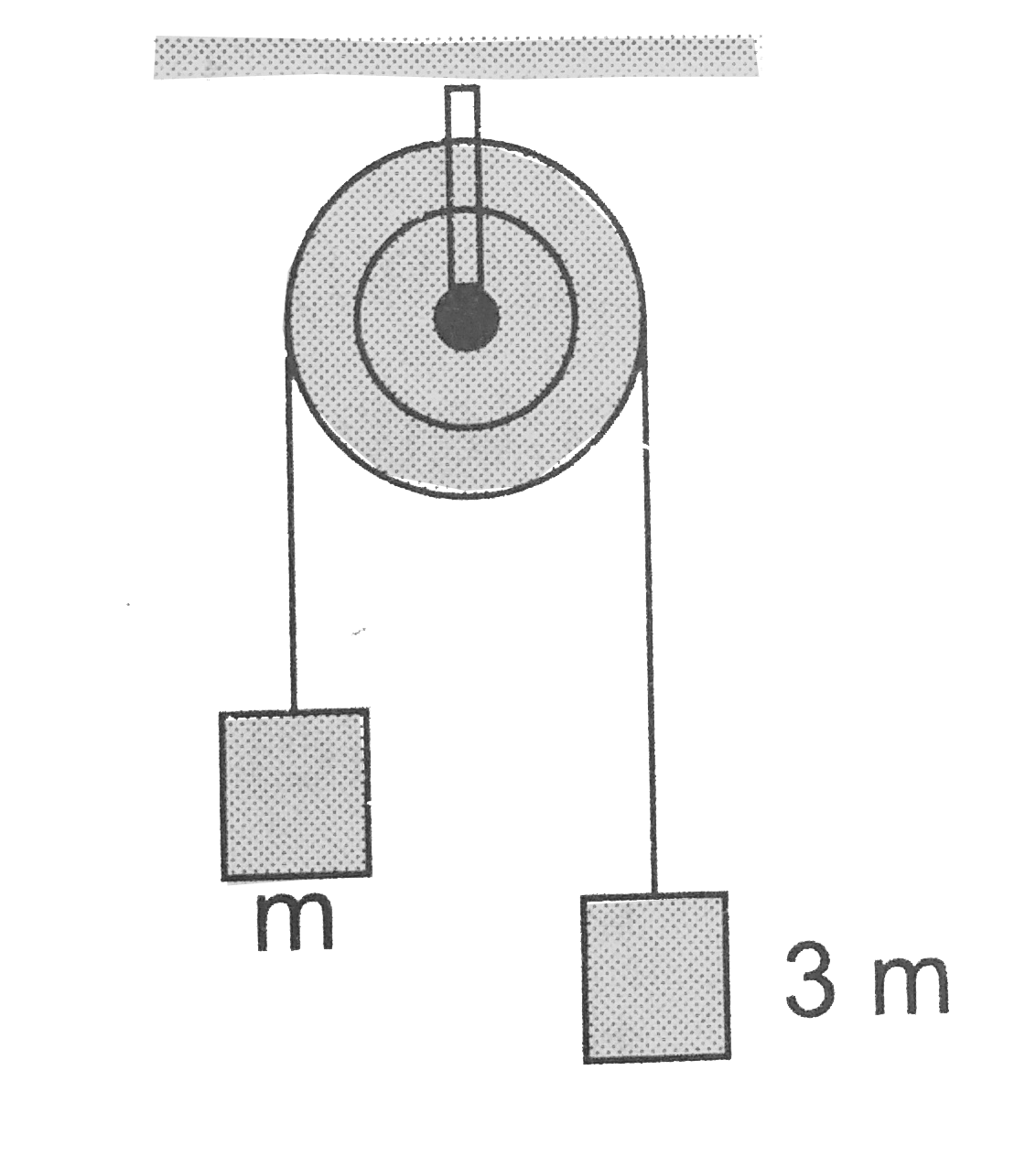 .
.
View SolutionTwo particles of equal mass have velocities `vec v_1 = 2 hat i= m//s^-1` and `vec v_2 = 2hat j m//s^-1`. First particle has an acceleration `vec a_1= (3 hat i+ 3 hat j) ms^-2` while the acceleration of the other particle is zero. The centre of mass of the two particles moves in a path of.
View SolutionTwo particles are shown in figure. At `t = 0` a constant force `F = 6 N` starts acting on `3 kg`. Find the velocity of circle of mass of these particle at `t = 5 s`.
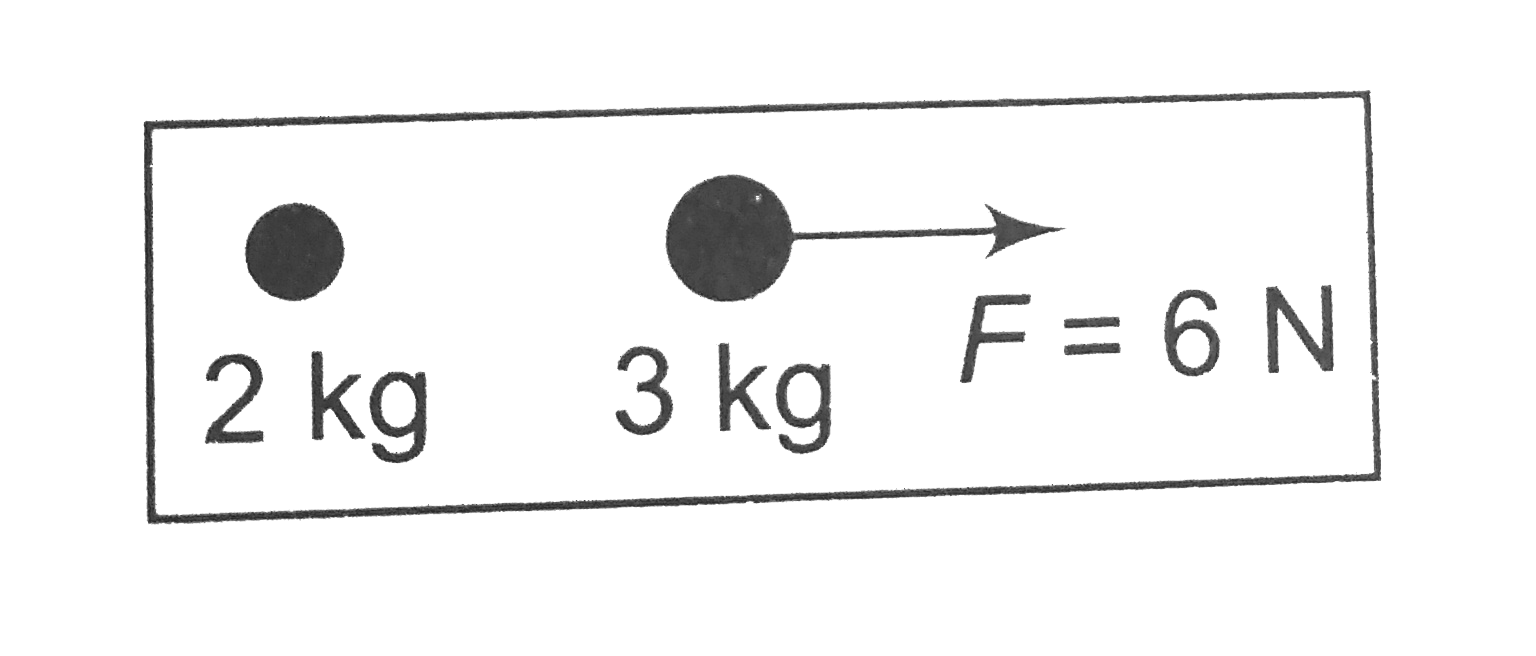 .
.
View SolutionFigure shows two blocks of masses `5 kg` and `2 kg` placed on a frictionless surface and connected with a spring. An external kick gives a velocity of `14 m//s` to the heavier block in the direction of lighter one. Deduce (a) velocity gained by the centre of mass and (b) the separate velocities of the two blocks in the centre of mass coordinates just after the kick.

View SolutionIn a system of particles `8 kg` mass is subjected to a force of `16 N` along `+ve` x-axis and another `8 kg` is subjected to a force of `8 N` along `+ve` y-axis. The magnitude of acceleration of centre of mass and the angle made by it with x-axis are given respectively by :
View SolutionAt `t = 0`, the positions and velocities of two particles are as shown in the figure. They are kept on a smooth surface and being mutually attracted by gravitational force. Find the position of centre of mass at `t = 2s`.
 .
.
View SolutionTwo blocks of masses 10 kg and 4 kg are connected by a spring of negligible mass and placed on a frictionless horizontal surface. An impulse gives a velocity of `14 m//s` to the heavier block in the direction of the lighter block. The velocity of the centre of mass is
View SolutionA wagon of `200 kg` is moving on a smooth track with velocity of `2 m//sec`. A man of `80 kg` also runs in the wagon with a velocity such that speed of the centre of mass of the system is zero. Find the velocity of man relative to the wagon (in m//s).
View SolutionThe velocities of two particles `A and B` of same mass are `vec V_A = a hat i` and `vec V_B = b hat j` where `a` and `b` are constants. The acceleration of particle A is `(2 a hat i+ 4 b hat j)` and acceleration of particle B is `(a hat i- 4 b hat j)` in `(m//s^2)`. The centre of mass of two particle will move in :
View SolutionTwo uniform non conducting balls `A and B` have identical size having radius `R` but made of different density material (density of A = 2 density of B). The ball `A is + vely` charged and ball `B` is - vely charged. The balls are released on the horizontal smooth surface at the separation `10 R` as shown in figure. because of mutual attraction the balls start moving towards each other. They will collide at a point.
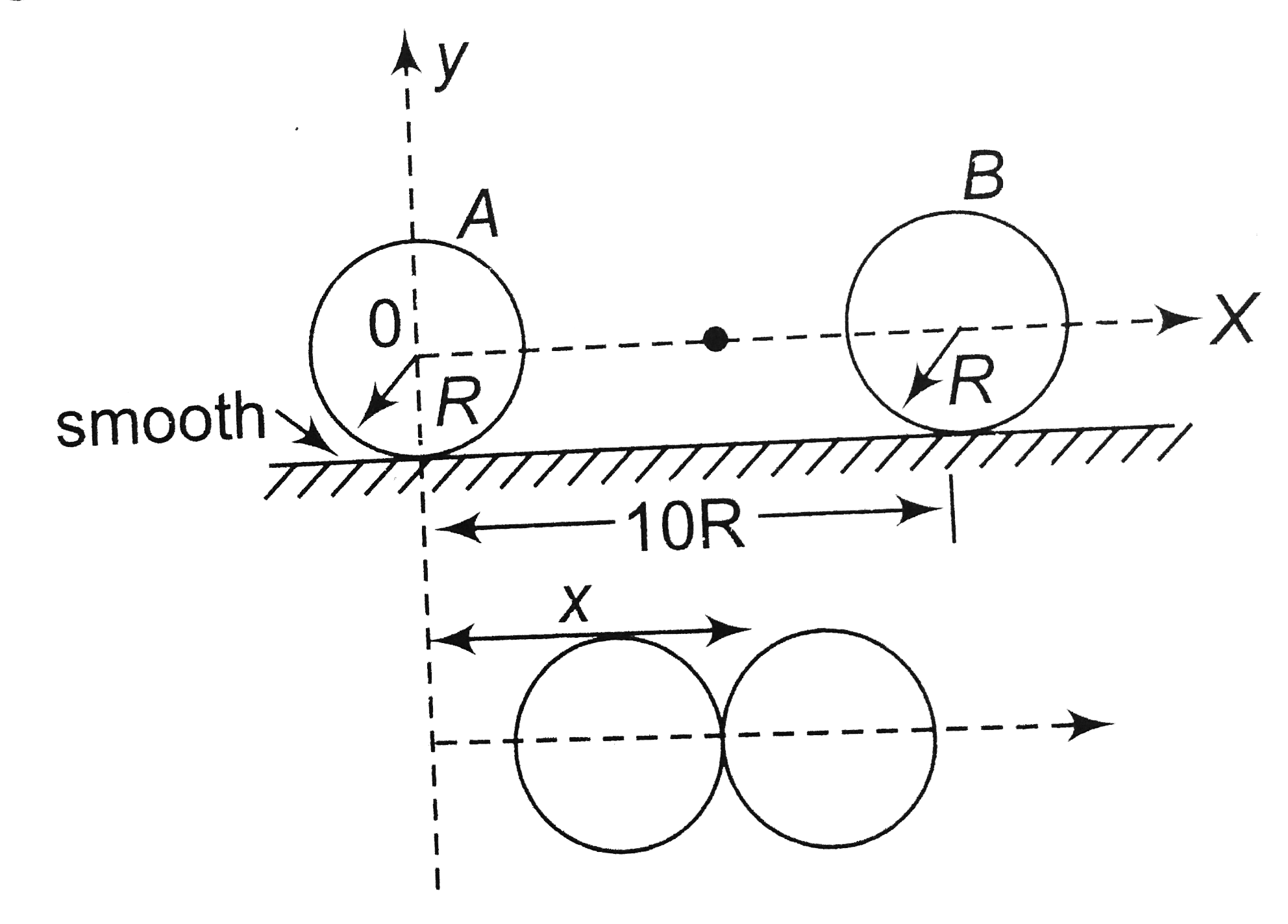 .
.
View Solution
Displacement , Velocity And Acceleration Of Centre Of Mass questions and complete solutions for chapter ROTATIONAL DYNAMICS of A2Z PHYSICS (HINGLISH) of Class 11
All Exercises from A2Z Class 11 PHYSICS ROTATIONAL DYNAMICS
- AIIMS Questions
- Angular Momentum And Its Conservation
- Assertion Reasoning
- Centre Of Mass
- Chapter Test
- Displacement , Velocity And Acceleration Of Centre Of Mass
- Moment Of Inertia
- NEET Questions
- Problems Based On Mixed Concepts
- Rotation And Translation Combined And Rolling Motion
- Rotational Kinematics
- Torque , Torque Equation And Equilibrium Of A Rigid Body
- Work And Energy In Case Of Rotation